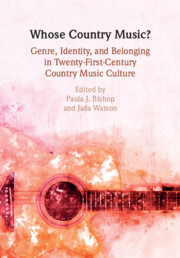Book contents
- Whose Country Music?
- Whose Country Music?
- Copyright page
- Contents
- Figures
- Tables
- Contributors
- “She went to Nashville to sing country music”
- Part I Industry
- Part II Codes of Conduct
- Part III Authenticity
- 9 Dolly Parton’s Netflix Reimagining
- 10 “When Britney [Spears] Ruled the World”
- 11 Rhinestone Revivals
- 12 Country Music Doesn’t Have to Suck
- Part IV Boundary Work
- Bibliography
- Index
11 - Rhinestone Revivals
Repurposing the Nudie Suit for The Twenty-first Century
from Part III - Authenticity
Published online by Cambridge University Press: 03 February 2023
- Whose Country Music?
- Whose Country Music?
- Copyright page
- Contents
- Figures
- Tables
- Contributors
- “She went to Nashville to sing country music”
- Part I Industry
- Part II Codes of Conduct
- Part III Authenticity
- 9 Dolly Parton’s Netflix Reimagining
- 10 “When Britney [Spears] Ruled the World”
- 11 Rhinestone Revivals
- 12 Country Music Doesn’t Have to Suck
- Part IV Boundary Work
- Bibliography
- Index
Summary
In the past decade, interest in the work of the tailor Nudie Cohn has intensified and the style he created, which was the defining dress practice of country music performance throughout the 1950s, has been reinterpreted by emerging western wear designers. This style juxtaposes the materials and construction values of bespoke tailoring with jewel colors, pictorial embroidery, sparkling rhinestones, and the style of the American West. Its revival began among musicians identified with the alt.country or Americana movements and has since broadened to mainstream country (Midland), to artists outside the genre (Lily Allen), and on its contested margins (Lil Nas X). This chapter explores the current revival as a development of and extension beyond the Nudie style’s established role as a signifier of authenticity, discussing its ability to reflect and to forge gender and race identities in country music, both historically and in the present.
- Type
- Chapter
- Information
- Whose Country Music?Genre, Identity, and Belonging in Twenty-First-Century Country Music Culture, pp. 162 - 176Publisher: Cambridge University PressPrint publication year: 2022

